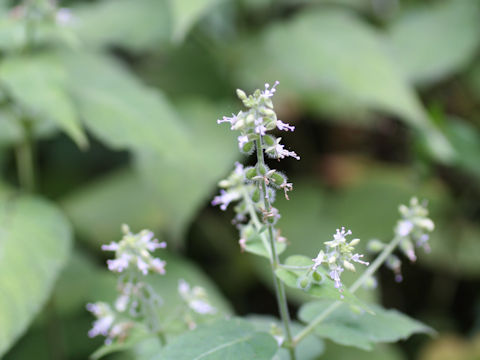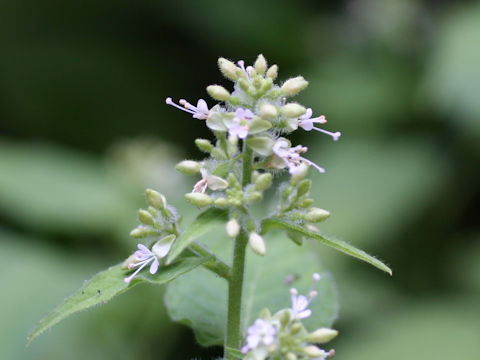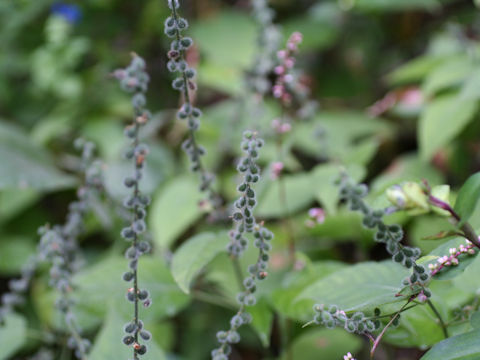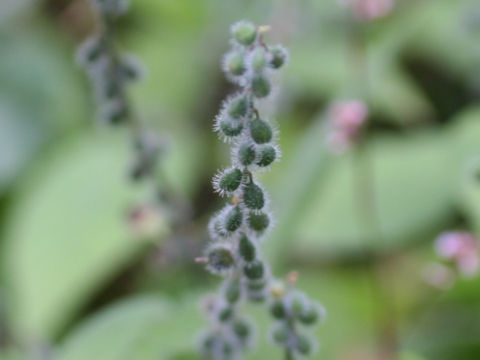
|
The "Ushitaki-so" (Circaea cordata) belongs to Onagraceae (the Evening primrose family). It is a perennial herb that is distributed throughout Japan, Taiwan, the Korean Peninsula, China, and the Indochina Peninsula. It grows in forests in mountainous areas and is 30-60 cm tall. The leaves are ovate, opposite, and heart-shaped at the base. From August to September, it produces a raceme at the top of the stem, which produces small, white, two-petaled flowers. The fruits are spherical and densely hairy. It is called "心葉露珠草" in Taiwanese and "露珠草" (lu zhu cao) in Chinese.
There is a theory that the Japanese name derives from the name of a place called "Mt. Ushitaki" and that the shape of the fruit, which is drop-shaped, is compared to "cow's spit" (shitaki). Incidentally, the southern Tohoku dialect of "tsuba" (spit) includes "shitage" in southern Yamagata, "shitaki" or "shitake" in Fukushima, and "kitaki" or "kitake" in Ibaraki.
|





